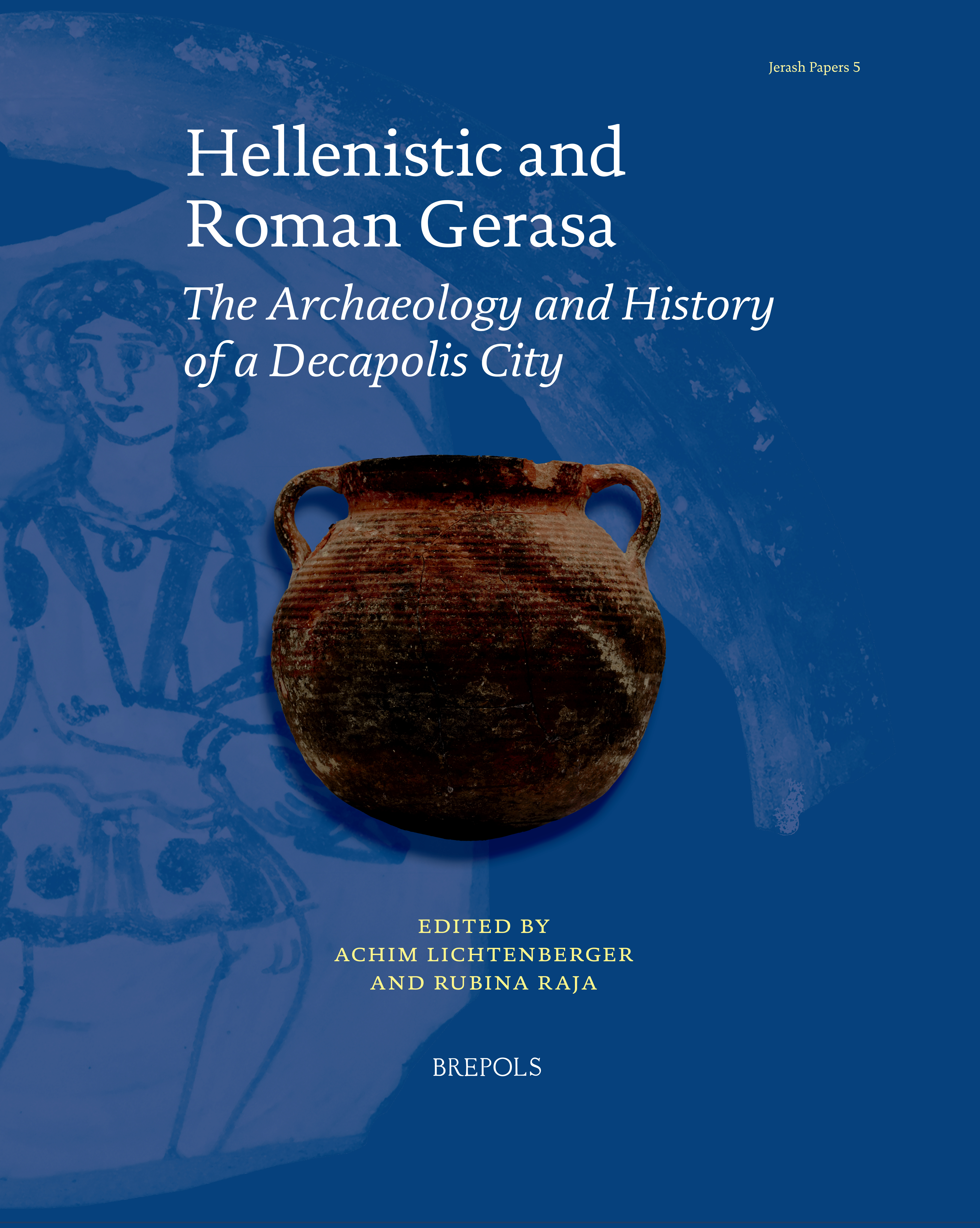Hellenistic and Roman Gerasa. The Archaeology and History of a Decapolis City
New publication by Professor Achim Lichtenberger (Westfälische Wilhelms-Universität Münster) and Professor and UrbNet Centre director Rubina Raja (Aarhus University).

Lichtenberger, A. & Raja, R. (eds) 2020. Hellenistic and Roman Gerasa: The Archaeology and History of a Decapolis City, Jerash Papers 5, Turnhout.
A new volume on the archaeology and history of Jerash
Large quantities of ceramic finds are found in Jerash in northern Jordan. Thousands of fragments used as fill for complexes or in the streets, fine ware imported from far away, locally produced cooking ware as well as decorative bowls, lamps and roof tiles. From the Late Hellenistic to the Early Islamic period, the flourishing city was home to a vibrant ceramics industry.
In a new publication, Jerash’s life in the Hellenistic and Roman period and the ceramic finds from this period are in focus. The publication stems from the work done within the framework of the Danish-German Jerash Northwest Quarter Project and the collective research project Ceramics in Context, attached to the project and funded by the Carlsberg Foundation.
Gerasene pottery
Jerash was called Gerasa in Antiquity, and it was one of the Decapolis cities. Kilns found throughout the city, with a concentration in the Hippodrome, suggest that Gerasa was a mass-production centre in the Decapolis region over a number of centuries. A vast array of material to suit the changing needs of daily life was manufactured in the city.
Drawing on finds yielded during different excavations by various archaeological projects, the contributions of this new publication evaluates the pottery from Gerasa produced in the Late Hellenistic and Roman periods. Typology, development over time and variations in the Gerasene pottery are explored and rare examples of imported material are analysed. This shed new light on the inner workings of the city as well as on the networks that extended beyond Gerasa’s walls.
In addition to assessing ceramic remains from the city of Gerasa itself, finds from neighbouring urban centres are also covered by the publication. Thus, the material is contextualised in a broader cultural and historical context, and it improves our understanding of consumption, trading and networks in the wider Decapolis area.
Excavations in Jerash
Between 2011 and 2016, the Danish-German Jerash Northwest Quarter Project undertook survey and excavations in the northwestern part of the city. This area is the highest part of Jerash within the city walls. Several new structures, massive amounts of ceramic fill layers, mosaics, coins, metal objects, glass fragments and much more were unearthed during the excavations, and our view on the development of Jerash through time has been greatly altered. The excavations are led by the universities of Aarhus and Münster, and directors of the project are Professors Achim Lichtenberger (Westfälische Wilhelms-Universität Münster) and Rubina Raja (Aarhus University).
The project is now in a phase of analysing finds and publishing the results of the fieldwork. Volumes on the ceramic finds from the city have already been published – now counting also this third and concluding volume of the Ceramics in Context project. The volumes all stem from conferences and workshops of the Ceramics in Context project rooted within the framework of the Danish-German Jerash Northwest Quarter Project.
The Jerash Papers series
The new publication is volume 5 in the series Jerash Papers. The series is dedicated to the extraordinary site of Jerash and its development from prehistoric to modern times. The already published volumes in the series cross disciplinary boundaries, and in them can be found contributions on different groups of archaeological material, different chronological periods and written sources from Antiquity to the nineteenth century.
Volume 1, The Archaeology and History of Jerash: 110 Years of Excavations, covers more than a century of research at Jerash, and contributing to the volume are researchers who have worked in Jerash over the last decades. Updated insights into the city and its evolution are presented, and the reader gets a good overview of the history of Jerash and the archaeological investigations undertaken at the site through many years.
Volume 2 is under preparation. It is a two-volume publication on the travellers and their accounts of Jerash from the site was rediscovered in 1806 and until excavations began here approximately one hundred years later. You can look forward to a comprehensive and abundantly illustrated publication.
Volume 3, Middle Islamic Jerash (9th Century – 15th Century): Archaeology and History of an Ayyubid-Mamluk Settlement, considers the understudied Ayyubid-Mamluk period in Jerash with an emphasis on the pottery finds. Excavations have revealed that Jerash in this period was far more extensive than previously thought. Among other things, unpublished material that have come to light during recent excavations are analysed.
Volume 4, Byzantine and Umayyad Jerash Reconsidered: Transitions, Transformations, Continuities, tackles the pottery of Byzantine and Umayyad Jerash. Pottery production peaked in these periods. The authors discuss, among other things, production techniques and key locations of ceramic work. Coinage and fine wares are also explored as part of a wider discussion.
The Danish-German Jerash Northwest Quarter Project will publish their final results in the series, and several volumes are already underway.
The series is founded by Professors Achim Lichtenberger and Rubina Raja, and it is published by Brepols Publishers. For more about the series, visit Brepol’s homepage.
